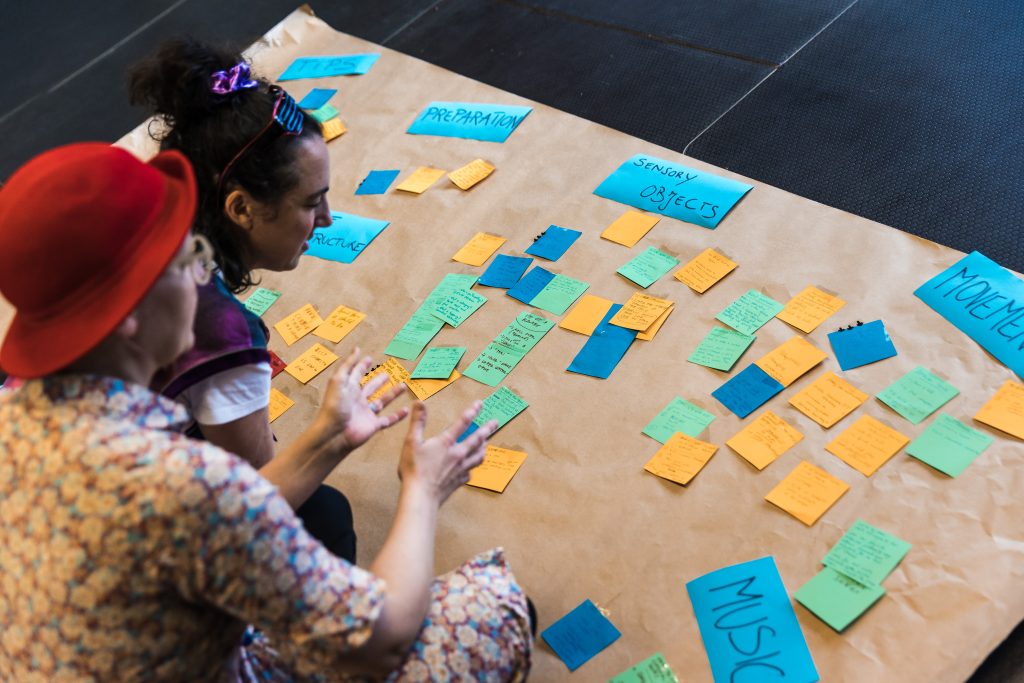© Saulius Aliukonis

A set of learning questions accompanied us during our project. Take a look to gain an insight into the questions that inspired our processes and which we consistently asked ourselves at regular intervals.
The questions were drafted in the frame of our Baseline Evaluation and based on consultations with the project participants and partners. During the project, we slightly adapted them to ensure that they remained relevant to our learning needs.
The ClowNexus team regularly came back to the learning questions to ask themselves whether their activities were still providing answers. Furthermore, the team used the learning questions to structure the findings of the project. Within ClowNexus, we used the learning questions as an informal framework to guide us in the background.
Older people with dementia and children with autism have unique perspectives of the world, which are often not valued. They are not uniform groups and represent a wide spectrum of circumstances.
Individualised attention, a slow pace, and an exploration of the senses are all key. Clowns must put aside their expectations and be comfortable with not receiving a reaction.
More participatory co-design, especially with participants, family members, social experts and specialists provides a great opportunity for this project. There is an eagerness to learn more about creating art together with the target groups. Another wish is to collaborate more internationally and with artists from other disciplines.
Changes among the audiences, including care providers, have been observed according to mood, stress levels, attention/focus, physical behaviour, and connections / relationships.
Creative tools can reflect the creative nature of clowning and are better suited to capturing the depth and diversity of clowning beyond quantitative indicators.
Clowns in hospitals are well-known and broadly accepted, but there is limited awareness about clowning for other target groups, and only a narrow understanding of the benefits of clowning.
Having learning at the heart of our project has helped us to stay curious and provided us with an element of guidance. The learning questions above also reminded us to pay attention to all the areas of interest of our project. It was important to create learning questions that were both inspirational and accessible to promote curiosity, critical thinking, and a deeper understanding of the subject matter. Developing your own learning questions may support your project too!
Click here to access our Learning tools as well as a guide on how to develop learning questions: